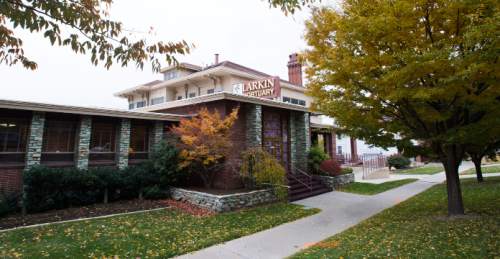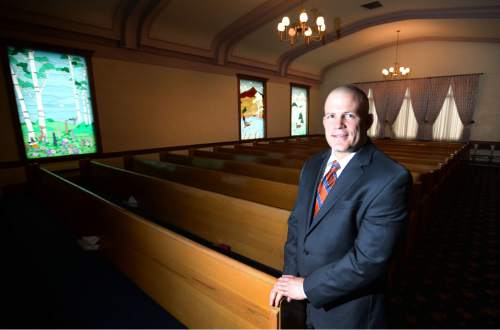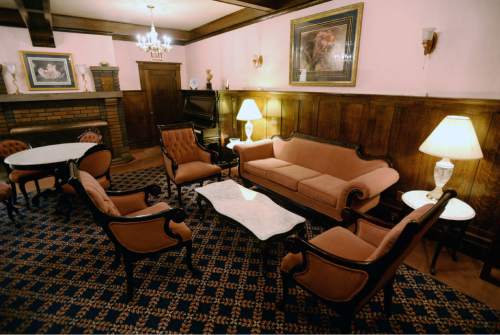This is an archived article that was published on sltrib.com in 2016, and information in the article may be outdated. It is provided only for personal research purposes and may not be reprinted.
Much has changed, but much remains the same in the funeral business since Larkin Mortuary opened its doors 130 years ago.
While services often are more personalized these days, "people have to go through the same grieving process," said Spencer Larkin, who represents the fifth generation of family members involved in helping Utahns put their loved ones to rest.
And so the mortuary, which began operations in Ogden in 1885 and now has four Salt Lake Valley locations, maintains a commitment to provide "a lot of service and care" to people when often they need it most, Larkin said.
"They are very vulnerable and trusting in you," he added. "It's amazing the intimacy and close friendships you develop with people [in these situations]. Many last for years."
The family business began with George William Larkin, a Mormon emigrant from Cambridge, England, who arrived in Salt Lake City in 1863. He originally cut stones for the Salt Lake Temple of The Church of Jesus Christ of Latter-day Saints and was a Pony Express rider for a short time before Brigham Young dispatched him to Ogden to run the cemetery there.
From that assignment came Larkin Mortuary, which now has 130 employees.
George's son Alma brought the business to Salt Lake City in 1912. He oversaw its operations for the next 34 years, including a move in 1925 into the ornate Hagenbarth Mansion at 260 E. South Temple.
That European-style building, with its fine woodwork and classic stained-glass windows, remains a focal point of company operations, supplemented by three other facilities in other parts of the Salt Lake Valley:
• Larkin Sunset Lawn, a 12-acre cemetery with a chapel, cremation center and indoor mausoleum at 2350 E. 1300 South
• Larkin Sunset Gardens, a 76-acre site at 10600 S. 1700 East with a cemetery, mortuary, mausoleum, floral shop and monument-design center
• Larkin Mortuary, 3688 W. 12600 South in Riverton, with a chapel and reception center on a two-acre parcel
That geographical expansion is indicative of what's changed since 1885, Spencer Larkin said.
"It used to be that the mortuary had to be close to the cemetery," he added. "Now it's a lot easier to bury somebody anywhere — Idaho, if need be."
Improved chemicals for embalming have helped with that. Far better forms of transportation, too. And having heavy equipment available to dig graves, even in winter, has made it much easier to deal with death in a timely fashion for survivors of the dear departed.
"Some customs have changed, too," Larkin said, citing a marked increase in cremations during the past decade. Food and drink are often a mainstay at services these days, he noted, and "baby boomers like it done their way, so there's a lot more personalization."
Still, the impact of an individual's death on loved ones left behind is no different now than it was in 1885, and it's important for family members to be able to mourn rather than just celebrate a person's life.
"I can't think of a better time to cry than at a funeral," Larkin said. "Sometimes running away from grief comes back to haunt you. You want to be solemn. There has to be a balance. You need to make sure your loss has been taken care of."
To foster those feelings, the downtown Salt Lake City mortuary is designed to instill a feeling of warmth and comfort to people the instant they enter.
"It's hard walking in the front door," Larkin said, "and we know that."
There are rooms large and small where families can gather to reminisce or pray, such as a chapel with stained-glass windows featuring scenes of the four seasons, a simile for the span of a life.
"There's so much symbolism in the ritual," he said. "A funeral service does such a great job in helping families through the transition. It gives people a way to show they love you. We want to enable that for the family in a way that they want it to happen."















